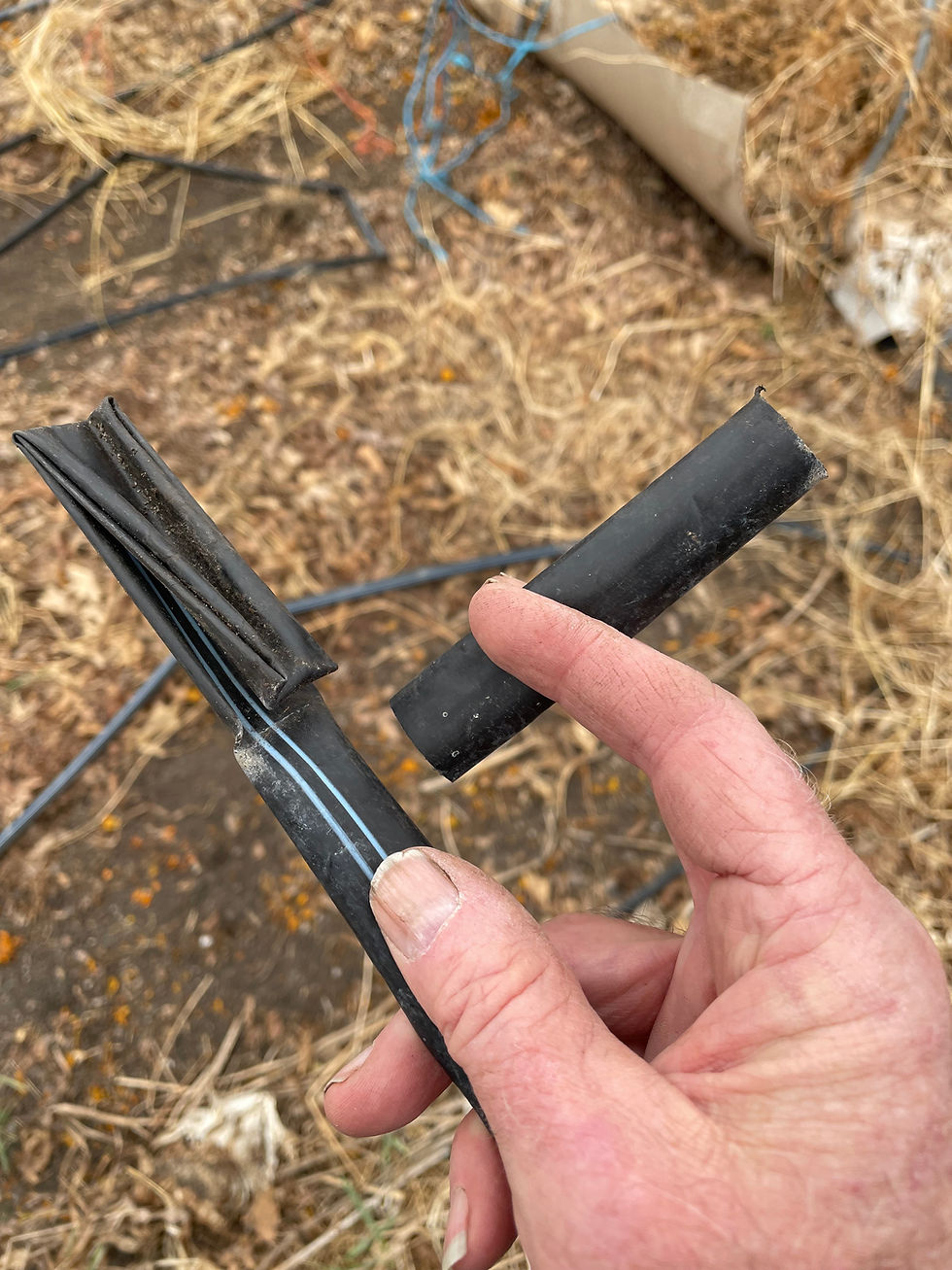Spring 2023 - Letter from the Editor
- Liza Gabriel
- Jul 10, 2023
- 4 min read
By Elizabeth Gabriel

It’s been a balmy winter in upstate New York and worries about the sap season (not to mention the general longevity of sugar maples reproducing and surviving in this region) loom large. For a while, we were wondering if the maple trees had even frozen enough this winter for the sap to flow well. Thankfully - they did.
As we boiled the first run of sap at our farm last week, it was 75 degrees. We played with our toddler in the sandbox outside our sugar shack while donning t-shirts, our uneasiness with the unseasonably warm weather overshadowing our enjoyment of the moment. Fortunately, where I am, a freeze-thaw cycle would follow this warm spell so the sap season wasn’t over… yet. Apparently, some of Connecticut wasn’t so lucky, where they also experienced minimal cold nights this winter but their days warmed enough in January that maple trees started budding out - abruptly ending sap harvest.
Extreme heat. Extreme cold. Extreme drought. Extreme floods. If you’re a farmer - and hopefully even if you’re not in a land-based field of work - you’re well aware that extreme weather patterns and climate chaos is a new reality. Perhaps the unofficial slogan for farmers should be the one my money-management teacher engrained in me, “expect the unexpected.”
While it could be debated if organic farmers are known for managing money, I’d argue they are among the best at expecting the unexpected. Observation is at the heart of farming naturally and regeneratively. A farmer must get to know their landscape intimately, and then create resilient systems designed for redundancy. This means a good system is not only strong and abundant, but if it were to fail, another will take its place.
How farmers manage and handle water - its abundance or lack thereof - goes a long way to determining if that farmer is prepared for the unexpected. Think of it as a farm’s indicator species. As three writers in this issue wrote separately (Julie Rawson, Stephen Leslie and Steve Gabriel), when you manage soil well, you’re actually managing for that soil to hold water.
We, humans, are mostly water. Earth is mostly water, as contributing writer Ben Falk wrote in his book, “Planet Water would be a much more accurate name than Earth." Water is needed for survival, sustenance and for all life to exist.
The Lakota phrase “Mní wičhóni” - “Water is life” - was the protest anthem from Standing Rock heard around the world. In many Indigenous world views, water not only sustains life, it is sacred. Last year, the Onondaga Nation in NY recovered more than 1,000 acres of forest lands in a Land Back effort from New York State and the federal government enabling - an effort that is not only politically historic but also supports ancestral memory and cultural lifeways for this Nation.
In this issue, you'll read of varying approaches to water saving such as cover crops, irrigation techniques, building soil, practicing no-till, and approaches to water management such as ‘slow it, sink it, spread it,’ rainwater harvesting, keyline cultivation, swales, ponds and vernal pools.
In the end, while I do hope this issue provides tools and resources for you to work with the ebbs and flows of water more effectively on your landscape, what I truly hope you take away from your reading is a renewed appreciation for water. I hope that the next time it rains, you’ll deliberately go walk in it for a while - right as the rain starts, in the middle of the storm and an hour or so after it’s over. Observe where the water pools, where it sinks into the earth, and where it creates streams small or large as it flows its path. What can you learn from these patterns?
Irrigation was first developed by Ancient Egyptian Indigenous groups, and cover cropping and mulching were first promoted by George Washington Carver
----
We hope you noticed the new look of the Special Issue that you received last month. For nearly 6-months, we’ve been working with graphic designer Jenn Bassman (who also runs Heritage Haus Farm in Berkshire, NY) to update our website, our newspaper template and our logo. We’re really pleased to have a consistent look across all of our methods of communication. We hope you find the new newspaper template well-organized and attractive; the website easy to navigate and that it enables you to find previously published TNF articles. We’re still transferring some content from the old site, but articles published in the past year can be read on the site’s blog, while articles from 2016 to a year ago are posted as PDFs.
Since we’re a seasonally oriented organization and publication, Jenn designed a family of logos for us, each with a consistent font for The Natural Farmer. We’re energized to switch up the logo as the seasons change.
And, while we’re talking about communications, did you know The Natural Farmer is on Facebook and Instagram? Please follow us to stay in touch and to get updates about and suggest themes (https://www.facebook.com/NofaTheNaturalFarmer, @the_natural_farmer.






Comments